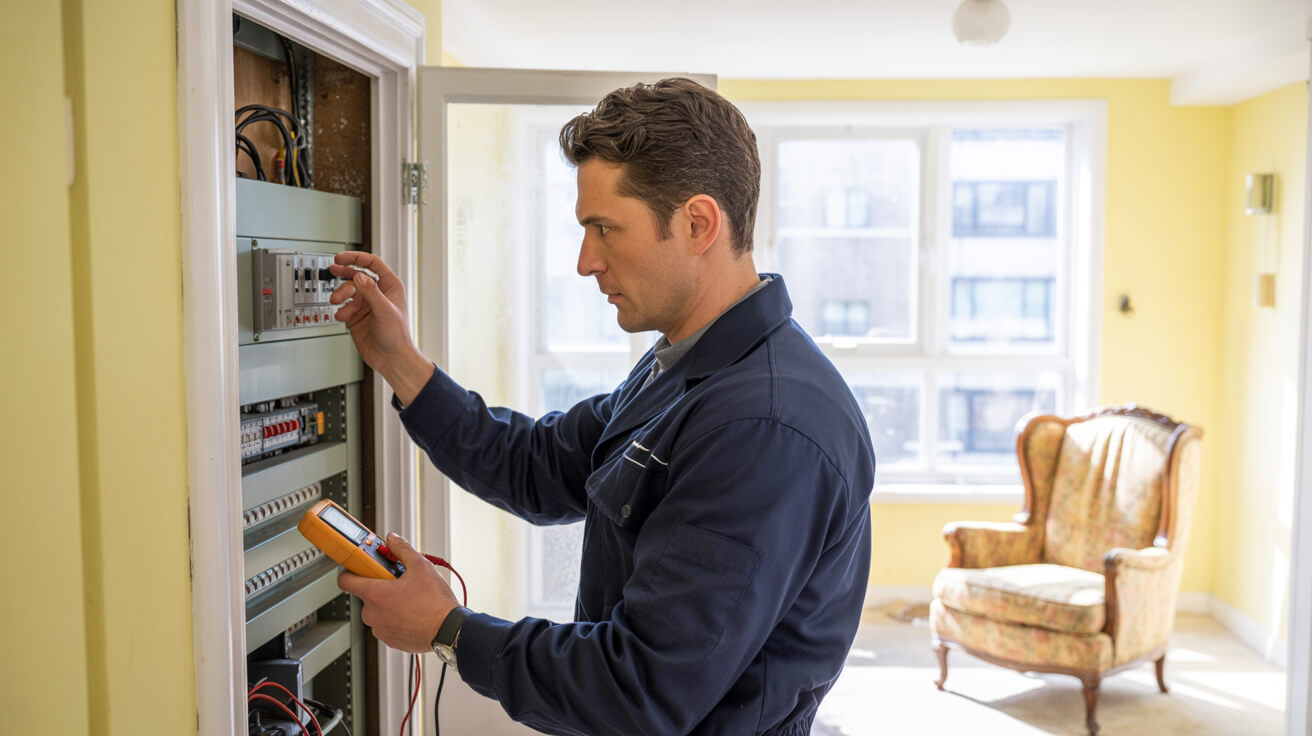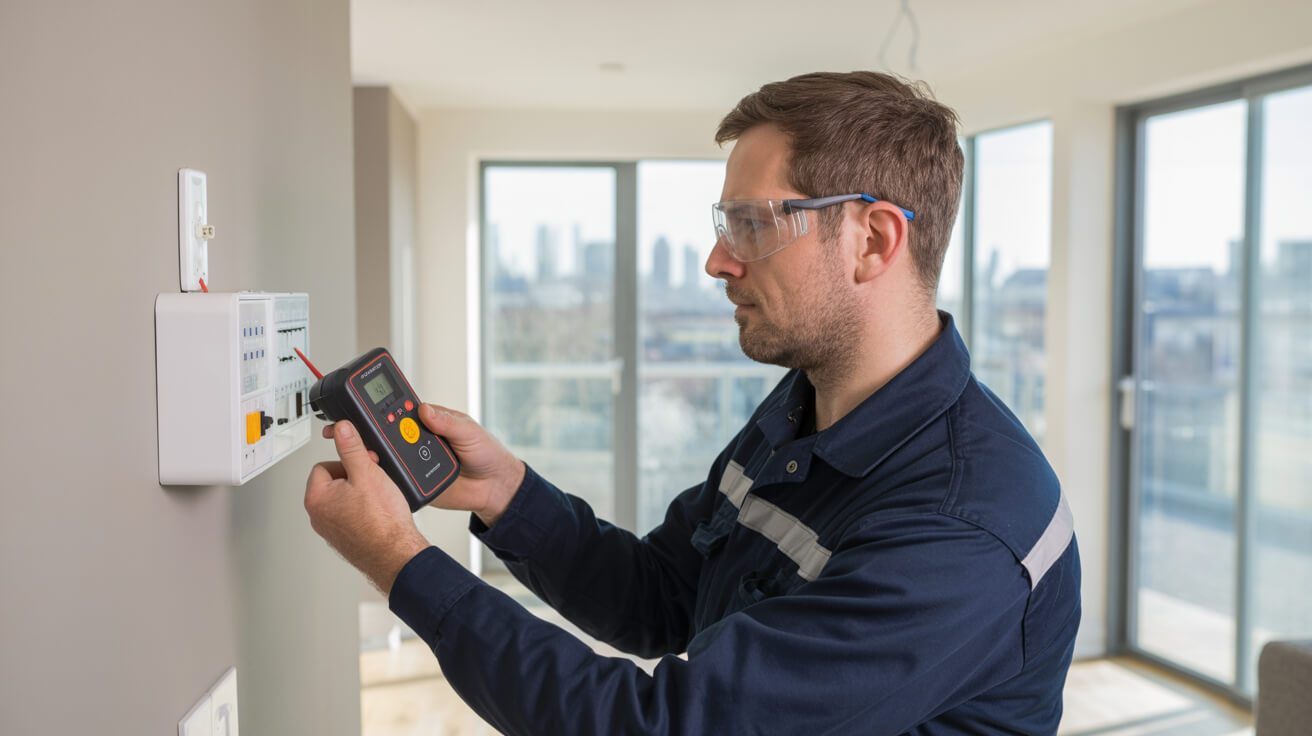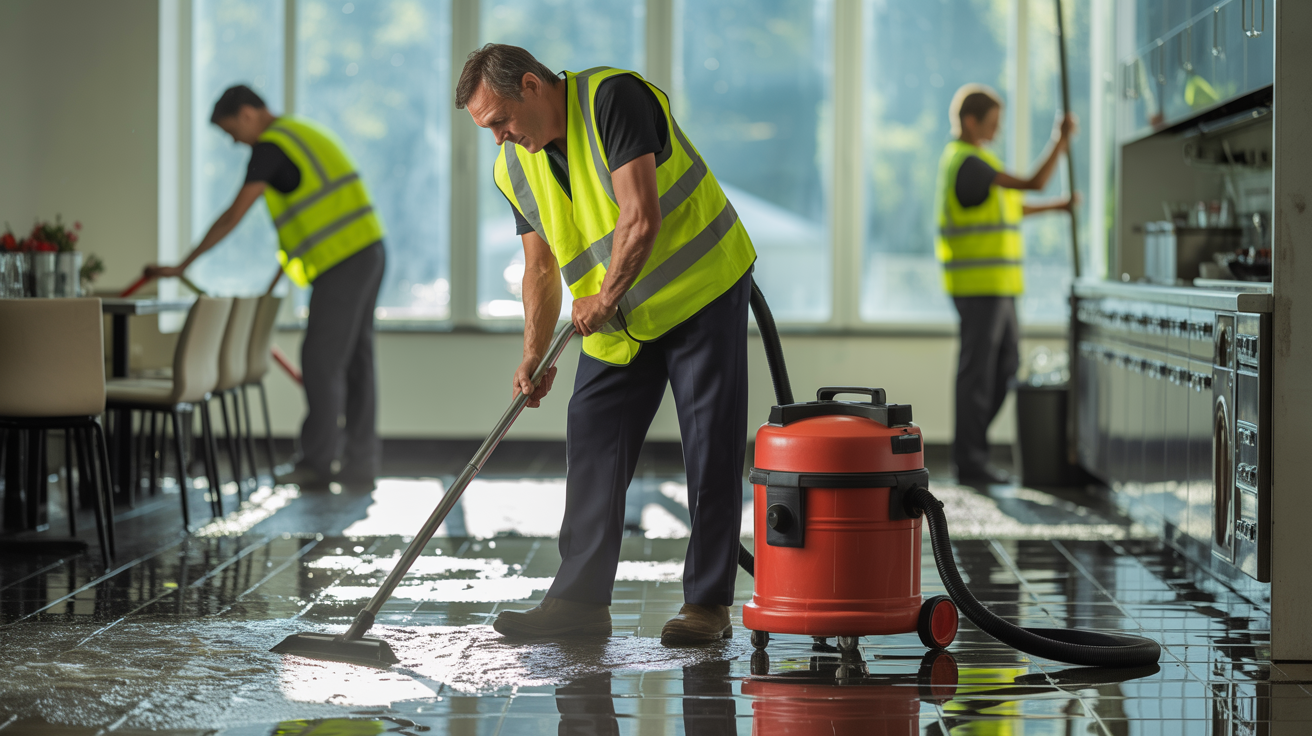 How Proactive Property Maintenance Reduces Workplace Disruptions
How Proactive Property Maintenance Reduces Workplace Disruptions

Why Do Workplace Disruptions Really Hit Harder Than You Expect?
A burst pipe. A jammed lift. A sudden lights-out when you need the boardroom. The most damaging workplace disruptions rarely show up with fanfare—they show up as surprises that wreck trust, waste time, and put your entire business on the back foot. Most property owners and facilities managers think they’re saving time or money by pushing back checks or niggling repairs. In truth, a single overlooked inspection or missed service record acts like a time-bomb: it trickles risk into your operations, stacking up hidden liabilities no contractor would choose to inherit.
Downtime is the only predictable risk you can shrink—by acting before it acts on you.
Neglected maintenance is more than a technical oversight—it’s a compounding threat to your reputation, cash flow, and the everyday experience of every person in your building. When finance leaders say “time is money,” they’re underselling the actual cost: research shows unplanned disruption is several times more expensive than planned, routine upkeep, once you add up overtime, cancelled meetings, missed deliveries, and brand damage (mpulsesoftware.com). Nothing saps morale like constant apologies or urgent “patch-up” jobs. If you want to run an operation others trust—clients, tenants, staff—you can’t afford to treat maintenance as a background chore.
Unexpected failures don’t just embarrass you on audit day—they wear down your team, destabilise tenants, and create a permanent state of anxiety about “what might go next.”
What’s Really Happening When You Let Maintenance Slide?

When a “minor” repair slips from your team’s attention, it begins a chain reaction you won’t always see until it’s too late. A missed emergency lighting test means risk in an evacuation drill. A leaky tap evolves into a slipped floor tile, a slip hazard, and potentially a holiday-making injury claim. Most disruptions don’t start with drama—they start with deferrals, with tasks ticked for next week, and systems left half-checked.
Consider the domino effect:
- Missed routine checks: mean key elements (fire doors, boilers, smoke detection) may quietly fail legal standards.
- Incomplete service records: jeopardise insurance and leave you vulnerable to blame—no proof, no payout.
- Repeated callouts: scramble your staffing, knocking the rest of your planned work sideways.
UK experts agree: reactive maintenance can cost you up to five times more in the long run than a proactive routine (buildingengines.com). You’re not just paying more for the fix—you’re paying for disruption, special-order parts, unhappy tenants, and a bruised reputation no one will tabulate for you.
Most workplace chaos comes from the jobs we decide can wait until tomorrow.
Letting maintenance slide is the fastest way to fall into a loop of repeated disruption and spiralling costs. Trying to fix issues only when they’re urgent brands your business as a “fire-fighting” operation—one always on the defensive, never in control.
How Does Proactive Maintenance Actually Defend Your Workflow and Brand?

Instead of waiting for alarms, proactive maintenance flips the whole script. Here’s how it looks in action:
- Scheduled checklists: for every asset: lighting, HVAC, water, security, and so on.
- Digital logs and registers: No item or test is left undocumented, which means you’re always audit-ready.
- Asset tracking, expiry alerts: , and warranty management let you pre-empt failures, avoiding supply and resource headaches.
Routine isn’t about mindless repetition—it’s about systematised defence. Well-trained technicians don’t just tick off boxes—they spot developing issues, log early faults, and can prevent downtime before it even starts.
The data backs it up: in UK workplaces, moving to a proactive, technician-led model has been shown to reduce operational incidents by up to 35%, with more predictable costs and far fewer Friday-afternoon emergencies (buildingengines.com).
A disciplined routine isn’t just about stopping problems; it means you never get blindsided.
With the right approach, you earn a double reward—lower costs and higher standing among clients, compliance monitors, and anyone else who counts on your facility.
Why Disruptions Cost More Than the Invoice (And How to Stop the Bleed)

If you’ve ever suffered an emergency breakdown, you know the sticker shock rarely reflects the real loss. That “one-off” £25 fix is just the tip of the iceberg: forced overtime, interrupted workflows, tenant complaints, and ad-hoc callout surcharges all pile up with every disruption.
Key areas where disruption stealthily drains value:
- Forced rescheduling: Project timelines slip, teams get pulled off strategic jobs to manage crisis repairs.
- Staff morale: Teams that expect “drama” disengage, and you see it in absenteeism, turnover, and output.
- Tenant dissatisfaction: Regular faults erode trust, making lease renewals and referrals an uphill battle.
It’s never just about the visible invoice—disruption eats into time, trust, and even your ability to compete.
preventive maintenance intercepts problems upstream. Every logged, scheduled repair is a block in your shield against workplace drama. With digital trails and scheduled checks, you buy back calm—your best insurance policy against cost, chaos, and shrinking business confidence.
What’s Inside a Modern Preventive Maintenance Plan?

High-impact prevention isn’t a scattergun approach or a last-minute fix list. Instead, it’s a mapped process, shaped around the biggest risks in your building. The gold-standard plan:
- Identifies every critical element—BS7671 electrical systems, gas appliances, fire doors, security, roofing—with tailored check intervals.
- Ranks assets by risk and age, assigning more frequent checks where failure would hit hardest.
- Schedules disruptive works—like boiler overhauls or roof repairs—outside business-critical windows (often overnight).
- Digitally logs every test, certification, and inspection, putting all evidence at your fingertips for insurance, letting, or external audits.
- Sets team routines to pre-fault, replacing worn items based on lifespan not just failure, keeping your environment trouble-free.
Smart contractors (like All Services 4U) integrate this approach right into every service agreement. You gain continuous coverage and simplified audit defence, with a workflow that matches your daily pressures, not the contractor’s convenience (allservices4u.co.uk).
The integrity of your records is as important as the strength of your building.
If you can’t instantly surface your records, you aren’t “really” compliant—no matter how many jobs you think were done.
How Is Technology Changing the Game—for Owners, Managers, and Teams?

Forget clipboards and after-the-fact stories. Today, the best-run property operations are built on live data, digital traceability, and predictive analytics.
Modern solutions include:
- IoT sensors and smart metres: Automatic, real-time alerts about leaks, damp, temperature, or electrical issues. No waiting for staff to notice.
- Computerised Maintenance Management Systems (CMMS): Maps every asset, schedules reminders, and logs work in real time.
- Analytics dashboards: Highlight reoccurring faults or bottlenecks, allowing you to preempt big ticket repairs with small interventions.
MRI Software found that teams running “analytics-first” prevention drives cut repair costs by close to 38% on average, and avoided over a third of unplanned works (mrisoftware.com). This isn’t just operational efficiency—it’s peace of mind, compliance confidence, and brand enhancement in one.
Automated record trails help you fight audits, manage insurance steps, and stay future-ready—without chasing old paperwork or chasing up missed checks.
Tech-enabled prevention means you’re in front of every challenge before it can impact your business.
Put simply, preventative tech delivers confidence—end to end, team to stakeholder, day after day.
How Safer, Well-Run Spaces Shape Morale and Productivity

It’s not only about what you avoid—but about what you win. Safe, consistent spaces don’t just beat disruption; they breed pride and focus. When people aren’t tiptoeing around repairs, chasing updates, or apologising to clients about delays, your culture transforms. Tenants and teams want to stay. People renew. Loyalty grows.
Regular, proactive maintenance is proven to yield:
- Sick leave and stress absences fall:
- Team retention rises: —happy staff don’t bolt at the first sign of trouble
- Work gets done: focus returns as “panic” jobs fade off your radar
- Tenant satisfaction grows: , with fewer reactive complaints and more positive feedback cycles
Staff and clients who trust their workspace perform better, stay longer, and build the standards your business is judged by.
Managing your property isn’t just about fixing faults. It’s about giving people the right environment to perform—and proving to stakeholders you care about their working day, not just your compliance folder.
Can Compliance Routines Really Make You Audit-Proof (and Bulletproof Your Reputation)?

Ask any UK auditor, loss adjuster, or risk inspector: there’s no shortcut to compliance, but a living, documented routine is the closest thing to “audit-proof” you’ll get. Health & Safety Executive (HSE) guidance is plain—proof of a proper, proactive routine demonstrates your legal duty and robust risk management (hse.gov.uk). Gaps—like late certificates or unlogged repairs—create insurance headaches and real regulatory fines.
What puts you ahead isn’t just doing the work, but knowing you can prove it—immediately, and in language every regulator or investor understands:
- Timestamped records for every inspection:
- Digital certificates and receipts, not paper chasing:
- Rapid response plans, tailored to your unique risks:
When an incident happens (and eventually, one will), will you have the evidence or just a memory of past fixes? Strong compliance routines don’t just shield you from penalties—they display leadership and resilience to all who count.
Well-kept records make you audit-proof and penalty-resistant, reflecting real leadership.
What’s the bigger risk—over-preparing, or letting a forgotten check trap your company in a crisis?
Why All Services 4U Is Built for Prevention, Not Panic
Great maintenance isn’t a list of “man with a van” repairs—it’s about bringing the entire skill chain together, syncing everything from minor leaks to major compliance pieces under a single, site-aware routine. All Services 4U assembles electricians, engineers, roofers, plumbers, joiners, and security experts who don’t just tick boxes: they anticipate, coordinate, and adapt to your building’s unique risk fingerprint.
What you actually get with our approach:
- Personalised risk and asset audits:
- Scheduled, transparently logged visits: with full digital sign-off—no surprises
- All-trade, single-visit interventions: for complex, recurring or multi-fault problems
- Phased works designed to minimise operational interruption: , with flexible timing
- Evidence at every step: instant record access for audits, insurance checks and regulatory visits
Our standards are set by industry benchmarks, but our results are set by our clients. In independent reviews, partners saw up to 60% fewer workplace interruptions and near-perfect audit records inside just one year of switching to our preventive protocols (summitpropertygroup.ca). With All Services 4U, “peace of mind” isn’t just a promise, it’s a pattern you can measure.
Prevention works when skills, records, and timing are united behind one aim: seamless, confident operation.
You want a facilities partner who puts disruption out of business. That starts with prevention, not repair.
How to Start Shrinking Disruption—Today, Not Tomorrow
Every leader is judged by what their teams endure, not what they plan. The right time to act against disruption is now—before next week’s inspection, before a new tenant encounter, before your next “sudden” callout.
With All Services 4U, you get more than compliance. You get a partner invested in your operation’s continuous reliability. That means:
- Proactive, asset-based routines
- Digital logs at your fingertips—no more paperchase
- Swift, expert response for the problems you don’t see coming
Experience what a “no-drama” property feels like. Discover how much more your team can achieve, and how much calmer your working life becomes, when you convert disruption into disciplined prevention.
Ready to protect your assets, your timetable, and your reputation for the long term? Start now—contact All Services 4U for your site assessment. You’ll never settle for “just another repair” again.
Frequently Asked Questions
How does a proactive maintenance strategy shape a property’s long-term financial trajectory?
A proactive maintenance strategy safeguards property value, improves compliance ratings, and delivers compound cost efficiencies that boost long-term financial outcomes.
When you move beyond reactive fixes, emergency callouts and unplanned major works become rarities, replaced by predictable, budgeted interventions. Over a 10-year horizon, property owners and facilities teams who invest in preventive care often see asset life extended by 30–50% while spending up to 40% less on corrective repairs compared to reactive models (Savills Building Consultancy, 2023). Smoother cash flow and superior records mean insurers see your risk profile as lower, which can translate to preferential premiums and easier policy renewals.
Every annual maintenance log written is a silent handshake with future investors—or the auditor deciding your next rate.
Stepwise gains come in the form of higher asset appraisals, reduced downtime, and tenant retention: stakeholders value consistency and proof of system reliability. Companies leveraging digital logbooks and scheduled maintenance are three times more likely to pass regulatory audits and report 20% higher average property resale values, according to recent ESFA data.
Which compounding benefits justify early investment?
- Capital projects can be staged, not rushed, with upgrade paths built into annual plans
- Stronger evidence base affirms compliance and supports preferential insurance treatment
- Consistent documentation shows prospective buyers or tenants a transparent maintenance culture
- Annual reviews spot efficiency gains—like switching to energy-saving equipment—long before regulation forces your hand
What are the most overlooked risks when relying on reactive-only property maintenance?
reactive maintenance lets the small stuff slip—often failing to spot hazards, hidden expenses, and silent compliance threats until after the fact.
Slow leaks can morph into widespread damp, HVAC irregularities cost thousands in excess energy, and recurring electrical “blips” risk serious outage. These issues generally go unflagged in ad-hoc, break-fix regimes, where the symptom is chased, not the root cause. Data from UK estate risk managers show that properties running without predictive logging or scheduled audits experience 2–3 times more downtime and safety incident reports per annum than those with proactive workflows.
Neglected details have a habit of showing up at the worst moment—during an audit, claim, or when a key tenant is watching.
Out-of-date fire certificates, gas safety lapses, or missed emergency light tests not only invite fines of up to £5,000 per breach but set the stage for denied claims and—worse—injury. In fragmented teams, responsibility gaps mean these items often go unchecked until a regulatory or insurance trigger forces action—with higher remediation costs and reputational impacts.
What silent disruptions demand a scheduled approach?
- Gradual water ingress undermining structure—first sign is paint bubbling, not visible leaks
- Unnoticed “trip” events in electric boards, signalling deeper wiring or overload risks
- Tenant complaints about inconsistent climate or lighting—often dismissed but indicating brewing system failures
- Certificate renewals missed, leading to automatic breach and possible liability exposure
How do modern digital monitoring tools and platforms prevent emergencies before they start?
Modern property maintenance technology leverages smart sensors and cloud-based management to forecast faults and front-load interventions.
Edge-connected sensors on pumps, distribution boards, or HVAC spot tiny parameter deviations—catching minor issues before they snowball into shut-downs or compliance violations. Such platforms cut across asset types, automatically flagging overdue service intervals, triggering reminders, and even scheduling engineers for on-site checks. In the latest BSRIA survey, portfolios using IoT-based maintenance solutions slashed urgent repair incidents by over 60% while cutting mean response-to-fix times by almost half.
A single dashboard, dozens of asset feeds—what used to take a team a week now surfaces in a click, with automated audit trails to match.
These digital approaches don’t just smooth in-house operations: they also equip property managers to respond to insurer or regulator queries in minutes, not weeks. Predictive analytics can forecast parts at risk, highlight compliance approaching expiry, and reduce both planned and ad-hoc callouts.
Which actions deliver the biggest digital impact?
- Deploy multi-sensor arrays for temperature, humidity, power draw, and vibration—high-fidelity signals for pending faults
- Use digital logbooks and mobile reporting so every inspection, test, or repair is instantly retrievable
- Automate compliance tracking, letting expiry or performance deviations become triggers, not missed obligations
Why does a “fix it when it breaks” mindset cost more in UK property management today?
A wait-until-failure approach exposes properties to escalating cost, compliance jeopardy, and lost goodwill from tenants—expenses now multiplied by stringent UK regulation and disruptive loss events.
Unexpected failures invariably cost more than scheduled works—think £2,100 per urgent callout for industrial electrical faults (CIRIA, 2023), not including business interruption, overtime, and reputational recovery. Emergency spending triggers procurement delays, contractor rush premiums, and often compromises on parts or workmanship for speed.
In the regulatory climate after the Building Safety Act, non-compliance in property records or fire safety can rack up fines up to 10% of net rent, with audit trails increasingly expected to be digital, tamper-proof, and immediate.
Routine care makes problems smaller and cheaper; waiting means higher premiums, more claims, and tenants asking hard questions.
Reactive models also frequently lead to insurance pushback: many policies now require digital maintenance logs. When incidents happen without record, property owners risk claim denials or higher excess, multiplying downstream costs.
What secondary costs accumulate under a reactive regime?
- Sub-threshold wear accelerating system and asset obsolescence—up to twice as fast without intervention
- Regulatory fines for missing or incomplete logs, sometimes exceeding the cost of compliance itself
- Lower re-sale or tenancy values as due diligence flags sporadic servicing or undocumented repairs
Which routine maintenance actions deliver the quickest wins for UK workplaces and managed properties?
The most valuable routines are those that are simple to automate, legally essential, and trackable for compliance—all achievable without disrupting core business activity.
Monthly fire alarm and emergency lighting checks, ongoing logbook entries for all gas and electrical safety work, and biannual surveys for water ingress or mould are top priorities. Add to this quarterly HVAC and plant maintenance—including philtre changes and drain checks—to cut the most frequent unscheduled outages by up to 55% (CBRE Facilities Study, 2022).
Quick “walk and snap” routines—site managers logging visual proof of asset health or faults with their mobile device—build a reliable library of service evidence. When managed via a partner like All Services 4U, these routines become seamless, covering both legal frameworks and practical realities.
Five minutes a week with a phone camera can prevent days lost to system failures—protection in your pocket.
Digitally scheduling these checks and tying them to compliance expiry dates not only reduces administrative risk, but also delivers clarity and peace of mind to all stakeholders.
What should be on your fast-track maintenance list?
- Fire, emergency lighting, and smoke detector testing—logged monthly, before certificate expiry
- Annual gas safety and electrical compliance verifications—submission-ready for audit at any time
- Quarterly walkthroughs with photographic records—validated against checklists and asset registers
- Changeover protocols—resetting systems, confirming documentation, and ensuring every asset is “fit for next use”
How does working with a multi-trade partner like All Services 4U improve compliance, continuity, and operational confidence?
Working with a specialist like All Services 4U combines expert coverage across compliance, repairs, and emergent tech—so property teams experience single-contact reliability and streamlined record-keeping.
Qualified, audited technicians handle every major service from fire safety to plumbing fixes to energy monitoring. This means essential visits are optimised—your site sees all issues addressed at once, not spread over months and disparate contractors. Digital-first workflows ensure that certificates, inspection logs, and repair history are all instantly available for any audit, insurance review, or board update.
With centralised scheduling and real-time updates, you gain certainty on compliance deadlines, reduce risk of regulatory gaps, and earn a reputation for operational leadership rather than crisis response.
When every engineer is equally invested in your compliance and asset health, downtime melts away and stakeholder trust thrives.
Clients of All Services 4U often report lower site disruption, improved insurance outcomes, and confidence during regulator or lender reviews—turning an anxious “are we audit-ready?” into a routine “of course.” Beyond quick fixes, this partnership builds a platform for your property’s long-term integrity, resilience, and financial health.
What advantages do integrated multi-trade teams offer?
- Competency across fire, electrical, plumbing, and compliance—just one trusted contact
- Live digital reports and certificates—immediate evidence trail for all stakeholders
- Centralised, adaptive scheduling—so nothing is missed, and urgent issues are escalated instantly
- Enhanced risk management—proactive identification and rapid resolution with full regulatory alignment



